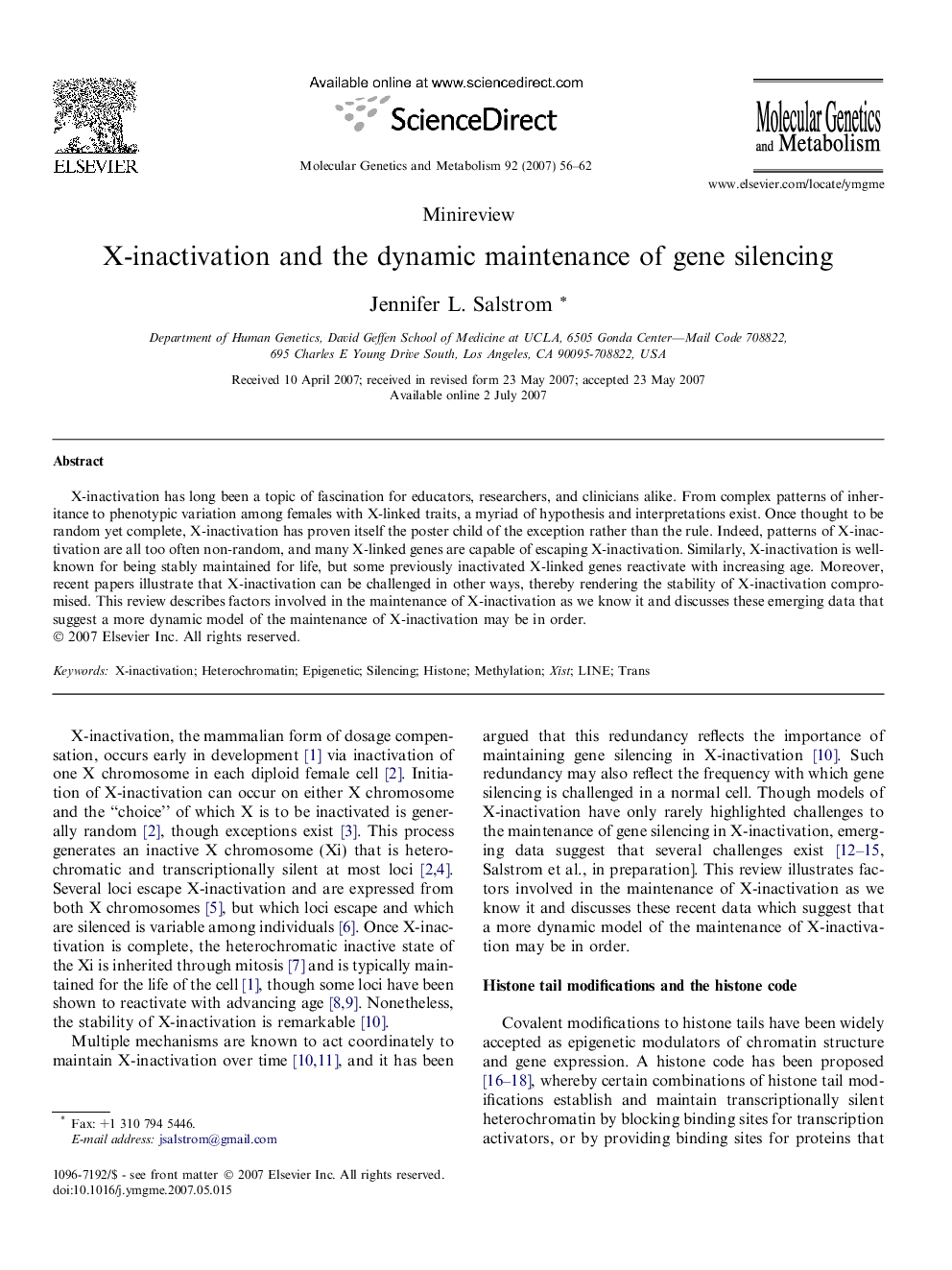| Article ID | Journal | Published Year | Pages | File Type |
|---|---|---|---|---|
| 2000076 | Molecular Genetics and Metabolism | 2007 | 7 Pages |
X-inactivation has long been a topic of fascination for educators, researchers, and clinicians alike. From complex patterns of inheritance to phenotypic variation among females with X-linked traits, a myriad of hypothesis and interpretations exist. Once thought to be random yet complete, X-inactivation has proven itself the poster child of the exception rather than the rule. Indeed, patterns of X-inactivation are all too often non-random, and many X-linked genes are capable of escaping X-inactivation. Similarly, X-inactivation is well-known for being stably maintained for life, but some previously inactivated X-linked genes reactivate with increasing age. Moreover, recent papers illustrate that X-inactivation can be challenged in other ways, thereby rendering the stability of X-inactivation compromised. This review describes factors involved in the maintenance of X-inactivation as we know it and discusses these emerging data that suggest a more dynamic model of the maintenance of X-inactivation may be in order.
